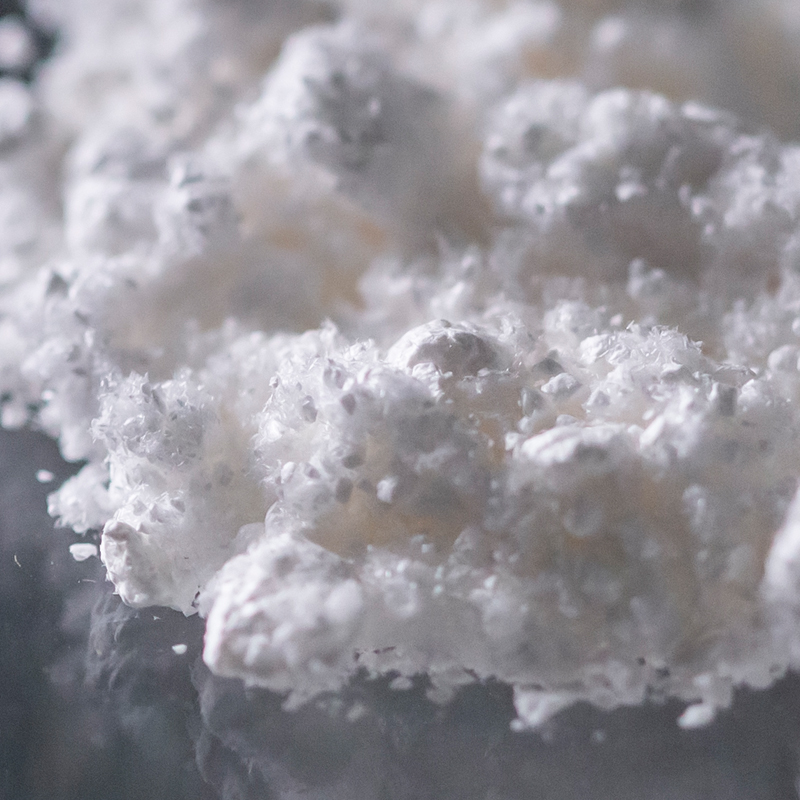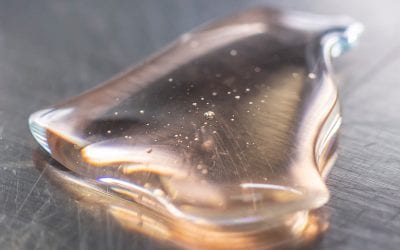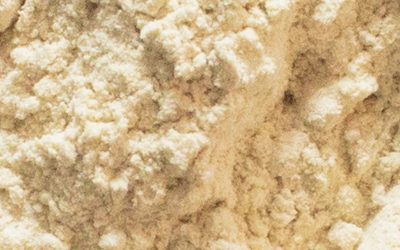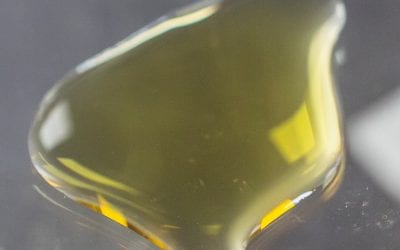What is CBG?
Cannabigerol, or CBG isolate, is a naturally occurring cannabinoid that can be found in hemp. This rare cannabinoid is structurally similar to CBD. But, because it occurs in much lower concentrations than other cannabinoids it is not as well known, nor as heavily researched. Over the past few years, however, academic and public interest in CBG has increased following several promising studies. Here’s what we know about CBG so far:
What is CBG good for?
Studies have hinted at CBG’s utility as an ant-oxidant, an anti-inflammatory supplement, neuroprotective agent, an antibacterial and beauty product. The following list of purported benefits is not exhaustive. But, it should still indicate why so many people are excited about CBG.
CBG’s anti-oxidant properties could treat many conditions:
In a similar 2017 in-vitro study, researchers also noted that CBG combatted oxidative stress by activating CB2 receptors.(1) This was particularly exciting because of the wide range of possible implications.
CB2 receptors are found all throughout the body, including in the bones, eyes, skin, immune system, and digestive tract.(2) Oxidative stress is also known to cause a huge range of negative impacts on those systems and can play a role in chronic fatigue, and infertility.(3)
If CBG can indeed regulate oxidative stress in this system, it could be a true panacea against the effects of oxidative stress. However, in order to feel confident in any of these applications, scientists will have to rigorously study each one individually. In short, the early results are promising, but we won’t have any definitive conclusions for some time.
CBG is a potent antibacterial agent:
CBG exhibits potent activity against MRSA–a potentially deadly strain of antibiotic-resistant bacteria. While scientists do not fully understand the mechanism behind CBG’s antibacterial activity(4), they are still excited to have a new weapon against dangerous bacteria.(5)
CBG could be great in beauty products:
A 2016 study found that CBG and one of its derivatives, CBGV, increased sebocyte lipid synthesis. This essentially means that CBG might help skin produce more natural oils to combat conditions like dry skin syndrome and eczema.(6) This would make CBG a new kind of moisturizer.
Most moisturizing products simply replace or trap your skin’s natural oils. (Newton) However, CBG seems to actually help your body produce more natural oils to fight the roots cause of dry skin. Individuals who suffer from acne, a condition caused by excessive skin oil, will want to steer clear of CBG however. Instead, they should look into cannabinoids like CBC and THCV that are known to downregulate sebocyte function to reduce oiliness in skin.(7)
CBG Oil:
CBG is capable of binding with CB1 receptors and CB2 receptors all throughout the body.(8) This means that individuals may want to use the cannabinoid differently depending on desired effects. In animal studies on the neuroprotective effects of CBG, for example, animals may be injected with or fed CBG supplements.(9) However, for skin treatment, topical applications of CBG will suffice.
Hemp plants tend to naturally contain low concentrations of CBG. As such, full-spectrum hemp oil will only have a small amount of the cannabinoid. In order to find higher doses of CBG, consumers will need to seek out CBG oils or isolates. In doing so, buyers should be mindful of the processing techniques and chemical additives involved in the manufacturing process. You don’t want the potential benefits of CBG to be canceled out by harsh chemicals or careless product formulations. If you’re interested in high quality, OBX’s CBG Isolate is >99% pure.
We’re still in the early days of research, extraction, and supplementation with CBG. But we’ll be keeping a close eye on this minor cannabinoid going forward. The early results look strong, and we believe that cannabigerol may make a big impact on health and wellness in the future.
References
1) Giacoppo S, Gugliandolo A, Trubiani O, et al. Cannabinoid CB2 receptors are involved in the protection of RAW264.7 macrophages against oxidative stress: an in vitro study. Eur J Histochem. 2017;61(1):2749. Published 2017 Jan 23.
2) Pertwee RG. Pharmacology of cannabinoid CB1 and CB2 receptors. Pharmacol Ther. 1997;74(2):129-180. doi:10.1016/s0163-7258(97)82001-3
3) Dandekar A, Mendez R, Zhang K. Cross talk between ER stress, oxidative stress, and inflammation in health and disease. Methods Mol Biol. 2015;1292:205-214.
4) Appendino G, Gibbons S, Giana A, et al. Antibacterial cannabinoids from Cannabis sativa: a structure-activity study. J Nat Prod. 2008;71(8):1427-1430.
5) Farha MA, El-Halfawy OM, Gale RT, et al. Uncovering the Hidden Antibiotic Potential of Cannabis. ACS Infect Dis. 2020;6(3):338-346.
6) Oláh A, Markovics A, Szabó-Papp J, et al. Differential effectiveness of selected non-psychotropic phytocannabinoids on human sebocyte functions implicates their introduction in dry/seborrhoeic skin and acne treatment. Exp Dermatol. 2016;25(9):701-707.
7) Newton A, A. Moisturizers Won’t Make Your Skin More (or Less) Oily. Lifehacker. 2018. https://vitals.lifehacker.com/moisturizer-wont-make-your-skin-more-or-less-oily-1824027304.
8) Navarro G, Varani K, Reyes-Resina I, et al. Cannabigerol Action at Cannabinoid CB1 and CB2 Receptors and at CB1-CB2 Heteroreceptor Complexes. Front Pharmacol. 2018;9:632. Published 2018 Jun 21. doi:10.3389/fphar.2018.00632
9) Valdeolivas S, Navarrete C, Cantarero I, Bellido ML, Muñoz E, Sagredo O. Neuroprotective properties of cannabigerol in Huntington’s disease: studies in R6/2 mice and 3-nitropropionate-lesioned mice. Neurotherapeutics. 2015;12(1):185-199. doi:10.1007/s13311-014-0304-z
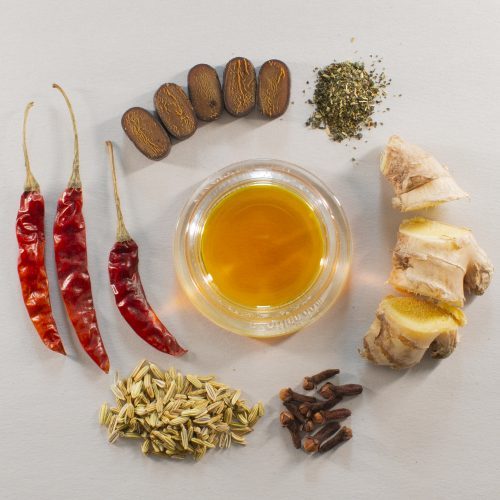
What is CBG?
Cannabigerol, or CBG isolate, is a naturally occurring cannabinoid that can be found in hemp. This rare cannabinoid is structurally similar to CBD. But, because it occurs in much lower concentrations than other cannabinoids it is not as well known, nor as heavily researched. Over the past few years, however, academic and public interest in CBG has increased following several promising studies. Here’s what we know about CBG so far:
What is CBG good for?
Studies have hinted at CBG’s utility as an ant-oxidant, an anti-inflammatory supplement, neuroprotective agent, an antibacterial and beauty product. The following list of purported benefits is not exhaustive. But, it should still indicate why so many people are excited about CBG.
CBG’s anti-oxidant properties could treat many conditions:
In a similar 2017 in-vitro study, researchers also noted that CBG combatted oxidative stress by activating CB2 receptors.(1) This was particularly exciting because of the wide range of possible implications.
CB2 receptors are found all throughout the body, including in the bones, eyes, skin, immune system, and digestive tract.(2) Oxidative stress is also known to cause a huge range of negative impacts on those systems and can play a role in cancer, diabetes, chronic fatigue, infertility, and neurodegenerative disease.(3)
If CBG can indeed regulate oxidative stress in this system, it could be a true panacea against the effects of oxidative stress. However, in order to feel confident in any of these applications, scientists will have to rigorously study each one individually. In short, the early results are promising, but we won’t have any definitive conclusions for some time.
CBG may be a neuroprotective agent:
In 2018, researchers noted that CBG was able to preserve cell viability in an in-vitro model of neural inflammation. This suggested that CBG had the potential to treat neuro-inflammation and prevent oxidative stress in the brain.(4) If these findings can be replicated in animals and then humans, it would be a major breakthrough for the treatment of neurological conditions like Huntington’s Disease, ALS, Parkinson’s, and more.
CBG has anti-cancer properties:
In 2014, an in vivo study showed that CBG inhibited the growth of multiple types of cancerous colorectal tumors. This led the study’s authors to conclude that CBG could be used both in the prevention and cure of colorectal cancer.(5)
Earlier this year, researchers found that CBG may be capable of fighting more than just colorectal cancer; A study on various breast cancer cell lines published in October of 2020 found that a group of cannabinoids, including CBG, could selectively halt cancer cell proliferation.(6)
While more research would certainly be necessary before CBG became a standard cancer treatment, these early results are very exciting.
CBG is a potent antibacterial agent:
CBG exhibits potent activity against MRSA–a potentially deadly strain of antibiotic-resistant bacteria. While scientists do not fully understand the mechanism behind CBG’s antibacterial activity(7), they are still excited to have a new weapon against dangerous bacteria.(8)
CBG could be great in beauty products:
A 2016 study found that CBG and one of its derivatives, CBGV, increased sebocyte lipid synthesis. This essentially means that CBG might help skin produce more natural oils to combat conditions like dry skin syndrome and eczema.(9) This would make CBG a new kind of moisturizer.
Most moisturizing products simply replace or trap your skin’s natural oils. (Newton) However, CBG seems to actually help your body produce more natural oils to fight the roots cause of dry skin. Individuals who suffer from acne, a condition caused by excessive skin oil, will want to steer clear of CBG however. Instead, they should look into cannabinoids like CBC and THCV that are known to downregulate sebocyte function to reduce oiliness in skin.(9)
CBG Oil:
CBG is capable of binding with CB1 receptors and CB2 receptors all throughout the body.(11) This means that individuals may want to use the cannabinoid differently depending on desired effects. In animal studies on the neuroprotective effects of CBG, for example, animals may be injected with or fed CBG supplements.(12) However, for skin treatment, topical applications of CBG will suffice.
Hemp plants tend to naturally contain low concentrations of CBG. As such, full-spectrum hemp oil will only have a small amount of the cannabinoid. In order to find higher doses of CBG, consumers will need to seek out CBG oils or isolates. In doing so, buyers should be mindful of the processing techniques and chemical additives involved in the manufacturing process. You don’t want the potential benefits of CBG to be canceled out by harsh chemicals or careless product formulations. If you’re interested in high quality, OBX’s CBG Isolate is >99% pure.
We’re still in the early days of research, extraction, and supplementation with CBG. But we’ll be keeping a close eye on this minor cannabinoid going forward. The early results look strong, and we believe that cannabigerol may make a big impact on health and wellness in the future.
References
1) Giacoppo S, Gugliandolo A, Trubiani O, et al. Cannabinoid CB2 receptors are involved in the protection of RAW264.7 macrophages against oxidative stress: an in vitro study. Eur J Histochem. 2017;61(1):2749. Published 2017 Jan 23.
2) Pertwee RG. Pharmacology of cannabinoid CB1 and CB2 receptors. Pharmacol Ther. 1997;74(2):129-180. doi:10.1016/s0163-7258(97)82001-3
3) Dandekar A, Mendez R, Zhang K. Cross talk between ER stress, oxidative stress, and inflammation in health and disease. Methods Mol Biol. 2015;1292:205-214.
4) Gugliandolo A, Pollastro F, Grassi G, Bramanti P, Mazzon E. In Vitro Model of Neuroinflammation: Efficacy of Cannabigerol, a Non-Psychoactive Cannabinoid. Int J Mol Sci. 2018;19(7):1992. Published 2018 Jul 8.
5) Borrelli F, Pagano E, Romano B, et al. Colon carcinogenesis is inhibited by the TRPM8 antagonist cannabigerol, a Cannabis-derived non-psychotropic cannabinoid. Carcinogenesis. 2014;35(12):2787-2797.
6) Schoeman R, Beukes N, Frost C. Cannabinoid Combination Induces Cytoplasmic Vacuolation in MCF-7 Breast Cancer Cells. Molecules. 2020;25(20):4682. Published 2020 Oct 14.
7) Appendino G, Gibbons S, Giana A, et al. Antibacterial cannabinoids from Cannabis sativa: a structure-activity study. J Nat Prod. 2008;71(8):1427-1430.
8) Farha MA, El-Halfawy OM, Gale RT, et al. Uncovering the Hidden Antibiotic Potential of Cannabis. ACS Infect Dis. 2020;6(3):338-346.
9) Oláh A, Markovics A, Szabó-Papp J, et al. Differential effectiveness of selected non-psychotropic phytocannabinoids on human sebocyte functions implicates their introduction in dry/seborrhoeic skin and acne treatment. Exp Dermatol. 2016;25(9):701-707.
10) Newton A, A. Moisturizers Won’t Make Your Skin More (or Less) Oily. Lifehacker. 2018. https://vitals.lifehacker.com/moisturizer-wont-make-your-skin-more-or-less-oily-1824027304.
11) Navarro G, Varani K, Reyes-Resina I, et al. Cannabigerol Action at Cannabinoid CB1 and CB2 Receptors and at CB1-CB2 Heteroreceptor Complexes. Front Pharmacol. 2018;9:632. Published 2018 Jun 21. doi:10.3389/fphar.2018.00632
12) Valdeolivas S, Navarrete C, Cantarero I, Bellido ML, Muñoz E, Sagredo O. Neuroprotective properties of cannabigerol in Huntington’s disease: studies in R6/2 mice and 3-nitropropionate-lesioned mice. Neurotherapeutics. 2015;12(1):185-199. doi:10.1007/s13311-014-0304-z

